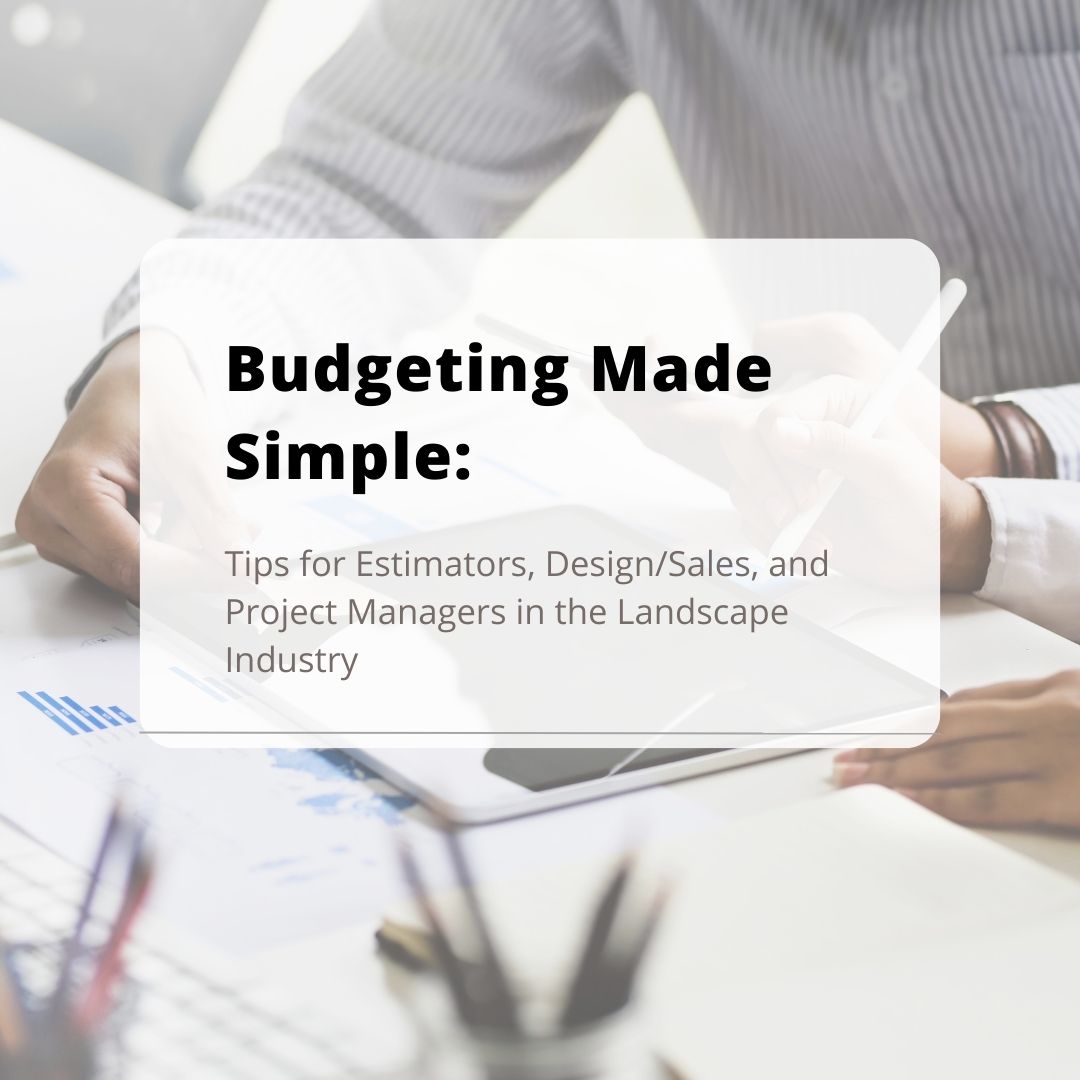
Welcome to the world of landscape project budgeting! Whether you're an estimator crunching numbers, a design/sales expert pitching ideas, or a project manager overseeing the execution, creating realistic budgets is crucial for success. In this blog, we'll break down budgeting into simple, actionable tips that cater to each role.
1. Collaboration is Key:
Estimators:
Invite input from design/sales and project managers early on. Their insights can provide a more accurate picture of project requirements.
Design/Sales:
Communicate client expectations clearly to estimators. Realistic input ensures that estimates align with the client's vision.
Project Managers:
Share past project data with estimators to help them understand potential challenges. Collaborate on realistic timelines and resource needs.
2. Detailed Site Analysis:
Estimators:
Conduct a thorough site analysis to identify potential cost drivers. Consider soil conditions, accessibility, and any unique features that might impact costs.
Design/Sales:
Gather detailed information from clients about their vision, preferences, and any specific requirements. The more details, the more accurate the budget.
Project Managers:
Offer insights into past projects on similar sites. Knowledge of potential challenges helps in creating a more comprehensive budget.
3. Embrace Technology:
Estimators:
Use estimating software to streamline the process. It reduces errors and ensures a more consistent approach.
Design/Sales:
Explore 3D design tools that provide accurate visualizations. This helps clients understand the design and its associated costs.
Project Managers:
Utilize project management software for real-time tracking of costs. This allows for quick adjustments as needed.
4. Contingency Planning:
Estimators:
Include a contingency in your estimates for unexpected costs. This safeguards against unforeseen challenges.
Design/Sales:
Communicate potential risks to clients upfront. Transparency builds trust and helps manage expectations.
Project Managers:
Monitor the project closely and be prepared to tap into the contingency if needed. Proactive management prevents budget overruns.
Learn from Past Projects:
Estimators:
Analyze past estimates to identify areas of improvement. What factors were often underestimated or overlooked?
Design/Sales:
Seek feedback from project managers on past designs. Understanding where designs met challenges helps refine future pitches.
Project Managers:
Reflect on past projects to identify recurring issues. This insight guides better decision-making during budget creation.
Examples in Action:
Case Study: Overcoming Unforeseen Site Challenges
- Estimators adjusted the budget based on insights from a similar past project.
- Design/Sales communicated the challenges transparently, managing client expectations.
- Project Managers utilized the contingency effectively, preventing budget overruns.
Utilizing Technology for Precision
- Estimators employed cutting-edge estimating software, resulting in more accurate budgets.
- Design/Sales used 3D design tools, reducing design changes and associated costs.
- Project Managers tracked costs in real-time, ensuring adherence to the budget.
Budgeting in the landscape industry doesn't have to be daunting. By fostering collaboration, leveraging technology, and learning from past experiences, estimators, design/sales, and project managers can work together to create budgets that set projects up for success. Happy budgeting!
Follow us on social media for more tips!
